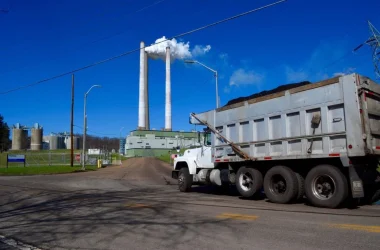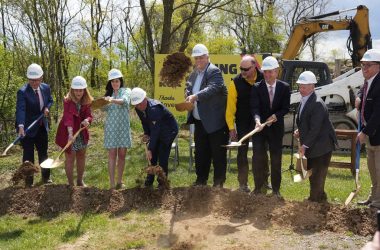CHARLESTON, W.Va. — A 12-year effort to keep 67-year-old Bluestone Dam safe appears likely to become more costly and time consuming, as the U.S. Army Corps of Engineers considers a new, 10-year construction project to modify the dam’s stilling basin, a channel used to dissipate the energy of water exiting the spillway to protect bedrock behind the dam from erosion during high flow events and prevent the destabilization of the dam.
The Corps of Engineers’ Huntington District is hosting public meetings to outline the planned new construction and its environmental and recreational effects at the Charleston Civic Center’s Classroom 202 on Thursday, at WVU Tech’s Tech Center Activity Room in Montgomery on Oct. 4, and at the Summers County Memorial Building in Hinton on Oct. 6. All meetings start with an open house event with Corps staff starting at 6 p.m., followed by formal public hearings at 6:30 p.m.
According to a summary for the Supplemental Environmental Impact Statement for new work, physical modeling and expert analysis conducted during the construction now in progress indicates that “the downstream bedrock is vulnerable to an unacceptable degree of erosion” during periods of high flow exiting the dam, and that unacceptable erosion could also potentially occur from the “overtopping of areas of the dam not designed to be overtopped.”
After considering alternatives to reduce erosion below the dam, engineers decided to modify the existing stilling basin, possibly by installing a concrete apron at the end of the existing basin and installing larger baffles — concrete posts used to break up the flow of water pouring out of the spillway — according to the summary.
If the new work is approved and financed, fishing in the New River immediately below the dam would be restricted and a public fishing pier would be closed during the estimated 10-year construction period. Recreation space next to the dam, closed now due to construction, would remain closed during the stilling basin modification period.
The level of Bluestone Lake could fluctuate more frequently during construction, as outflow from the dam would be reduced for routine flood storage. Fill material would be temporarily be placed in the river during construction, which could affect downstream aquatic life, according to the summary.
Built for $30 million in 1949, Bluestone Dam controls runoff from a 4,565 square-mile area, the largest watershed handled by any West Virginia dam. It reduces flood hazards along the New and Kanawha rivers from Hinton to Charleston and Point Pleasant, and points downstream along the Ohio River.
When the dam was being planned in the 1930s, engineers designed it to be able to contain runoff from the region’s worst storm on record — then a 1916 hurricane that dumped more than 13 inches of rain on its watershed in a 24-hour period.
In 2004, a $19.1 million project to install concrete thrust blocks to support the dam, to modify hydropower penstocks to improve outflow and to build a temporary access bridge below the dam to accommodate construction was completed.
In 2005, just after a $30.8 million project to install 150 steel anchors at the dam got underway, Hurricane Katrina blasted across the Gulf Coast, causing a flood surge that led to the catastrophic collapse of the New Orleans levee system, prompting Corps of Engineers planners to take another look at worst-case scenarios for flood control systems across the nation. It was decided that Bluestone Dam needed additional construction to meet new standards.
In 2009, $36 million in federal stimulus funding was used to add 54 more anchors, making the dam secure enough to have its flood control pool raised 20 feet. The following year, work got underway on a $48.5 million project to build a concrete stilling basin and line the penstock discharge area with concrete. In 2012, work began on a $55 million effort to install 115 bedrock-secured steel anchors at the dam.
The work currently in progress at the dam is not expected to be complete until 2020.
While more than $185 million has been spent on upgrades to the dam since 2004, Corps official have said it may take a total of $300 million or more to finish work needed to make sure the structure, even in the midst of the most severe storm imaginable, won’t budge off its bedrock foundation.
In addition to the upcoming meetings, the public can comment on the Supplemental Environmental Impact Statement for the new construction being considered at the dam. It can be viewed online at bit.ly/2dpU6Ev. Comments may be submitted at the meetings or by mailing them to Chief, Environmental Analysis Section, Planning Branch, Huntington District Corps of Engineers, 502 8th St., Huntington, WV 25701-2070.
Reach Rick Steelhammer at [email protected], 304-348-5169, or follow @rsteelhammer on Twitter.




